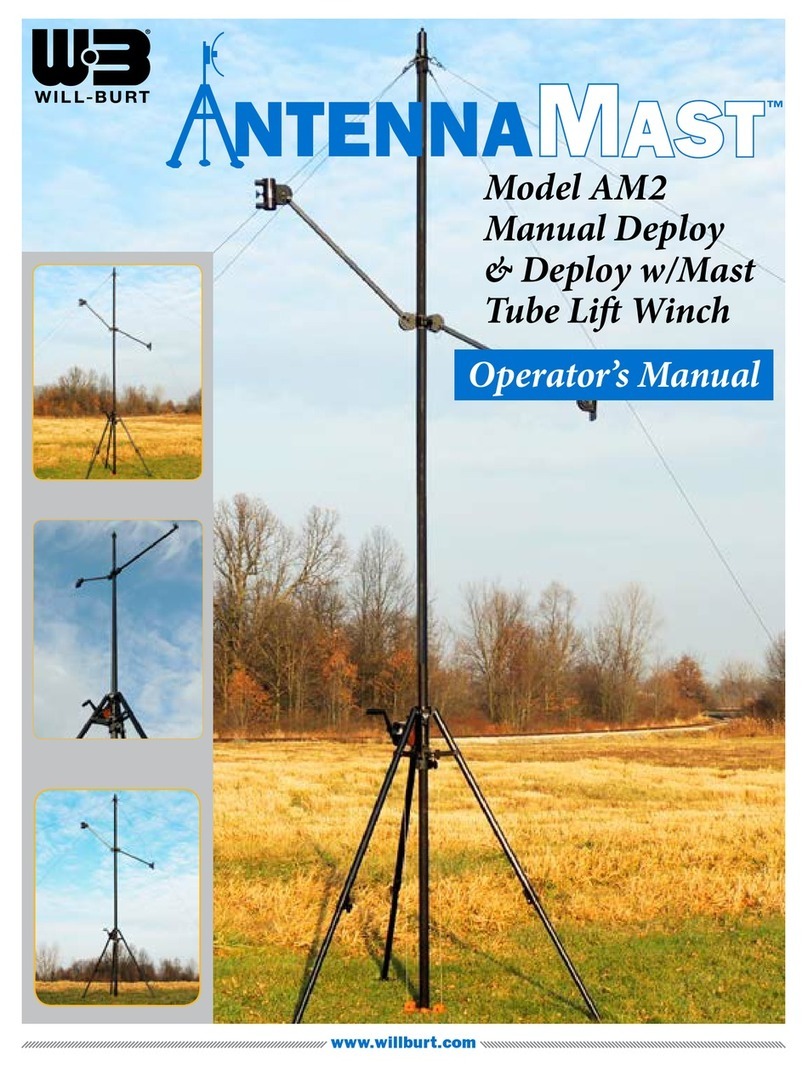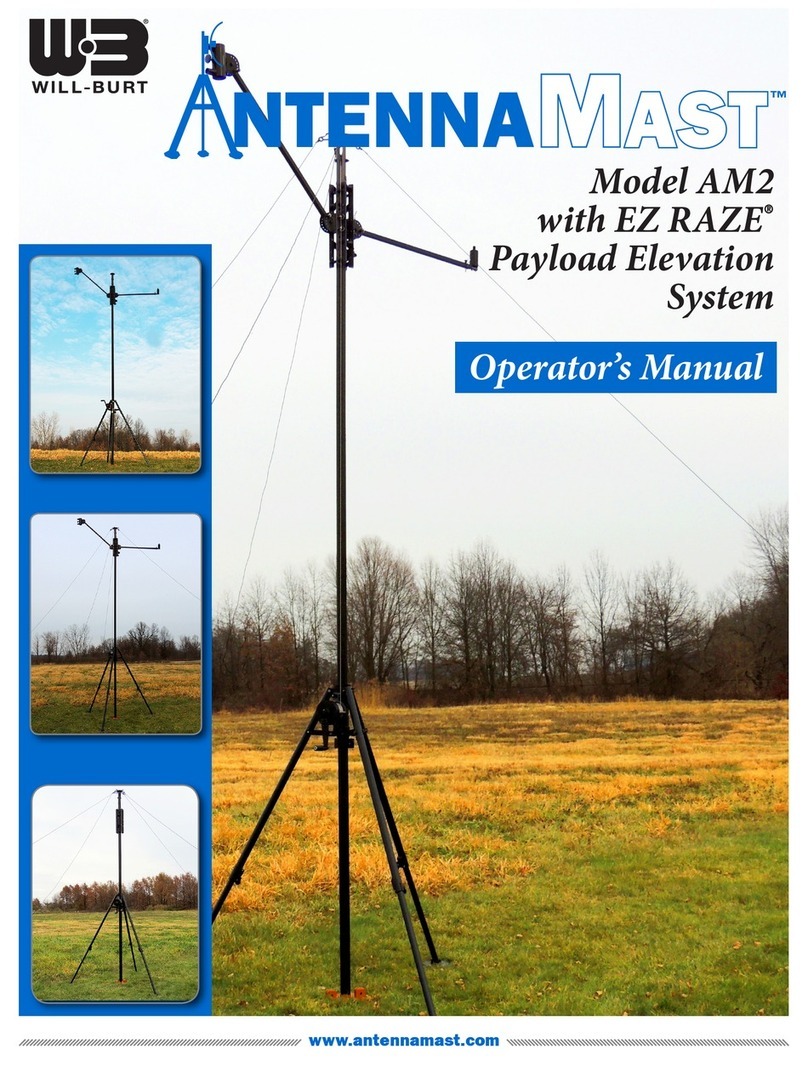
QEAM STRAP DRIVE MAST OPERATOR’S MANUAL
iv TP-4619601-D
October 2023
Figure 2-2 Accessory Bag S/A #2 Contents .............................................................................................. 2-4
Figure 2-3 Accessory Bag S/A #3 Contents .............................................................................................. 2-4
Figure 2-4 Accessory Bag S/A #4 Contents .............................................................................................. 2-5
Figure 2-5 Accessory Bag S/A #5 Contents .............................................................................................. 2-5
Figure 2-6 Accessory Bag S/A #6 Contents .............................................................................................. 2-6
Figure 4-1 Shipping Crate (Not to Scale) ................................................................................................... 4-2
Figure 4-2 Orient Base Plate at Center of Site and Anchor with Four Base Plate Stakes ........................ 4-3
Figure 4-3 Unwind Radius Rope in Direciton of Slot-Opening in Base Plate ............................................ 4-4
Figure 4-4 Hammer Guy Stakes at 60° Angle at Each Loop of Radius Rope ........................................... 4-4
Figure 4-5 Guying Diagrams ...................................................................................................................... 4-6
Figure 4-6 Place the Base of the Mast on the Base Plate ......................................................................... 4-7
Figure 4-7 Insert Tupe A into Tube B ......................................................................................................... 4-7
Figure 4-8 Slide the Legs into the Roller Frame ........................................................................................ 4-7
Figure 4-9 Place Gin Pole Center Apprx. 3 ft From Center of Base Plate ................................................. 4-8
Figure 4-10 Place Lift Winch Directly Opposite the Mast .......................................................................... 4-8
Figure 4-11 Stake Lift Winch Bracket in Place........................................................................................... 4-8
Figure 4-12 Tip Gin Pole Back Towards Lift Winch ................................................................................... 4-9
Figure 4-13 Connect Cable from Lift Winch to the Winch Shackle ............................................................ 4-9
Figure 4-14 Tension the Lines Lightly by Placing Guy Tensioner Hook Over Double Guy Lines ........... 4-10
Figure 4-15 Lift the Lift Winch Up by its Carry Handle and Rotate Crank Handle Clockwise ................. 4-10
Figure 4-16 Attach Remaining Guy Lines ................................................................................................ 4-11
Figure 4-17 Install the Manual Position or Top Tube Stub ...................................................................... 4-11
Figure 4-18 Raise Mast to Vertical ........................................................................................................... 4-12
Figure 4-19 Adjust Four Base Guy Lines Using Bubble Level ................................................................. 4-12
Figure 4-20 Detach Positive Retraction Reel ........................................................................................... 4-12
Figure 4-21 Install Winch Bracket to Side of Mast ................................................................................... 4-12
Figure 4-22 Place Strap Winch Handle Over Strap Winch Post .............................................................. 4-13
Figure 4-23 Secure Winch at Desired Position ........................................................................................ 4-13
Figure 4-24 Attach Positive Retraction Reel to Strap Winch ................................................................... 4-13
Figure 4-25 Feed Strap from Mast Around Winch Idler Arm and Onto Strap Reel ................................. 4-13
Figure 4-26 Place Strap Reel on Square Winch Shaft ............................................................................ 4-14
Figure 4-27 Attach Crank Handles to the Strap Winch at the Desired Reduction Shafts and 180° apart ... 4-
14
Figure 4-28 When Using Cordless Drill to Extend Mast, Set Drill to Lowest Torque that Will Operate Mast
................................................................................................................................................................. 4-15
Figure 4-29 When Guy Lines are Being Tensioned, Stand at Base of Mast and Site Mast for Vertical.. 4-16
Figure 5-1 Attach Crank Handles to the Crank Handle Input Shafts on the Winch ................................... 5-1
Figure 5-2 Remove the Pin Attaching the Positive Retraction Reel to the Strap Winch............................ 5-2
Figure 5-3 Remove Pin from the Square Winch Shaft ............................................................................... 5-2
Figure 5-4 Remove the Positive Retraction Reel from the Strap Winch .................................................... 5-2
Figure 5-5 Remove Pin Connecting the Strap Winch to the Strap Winch Bracket .................................... 5-3
Figure 5-6 Remove Strap Winch from Winch Post of Mast ....................................................................... 5-3
Figure 5-7 Remove Strap Winch Bracket .................................................................................................. 5-3
Figure 5-8 Add the Positive Retraction Strip and Pin in Place ................................................................... 5-3
Figure 5-9 Position Gin Pole in Place with Its Center 3 Feet from Base of Mast ...................................... 5-4































